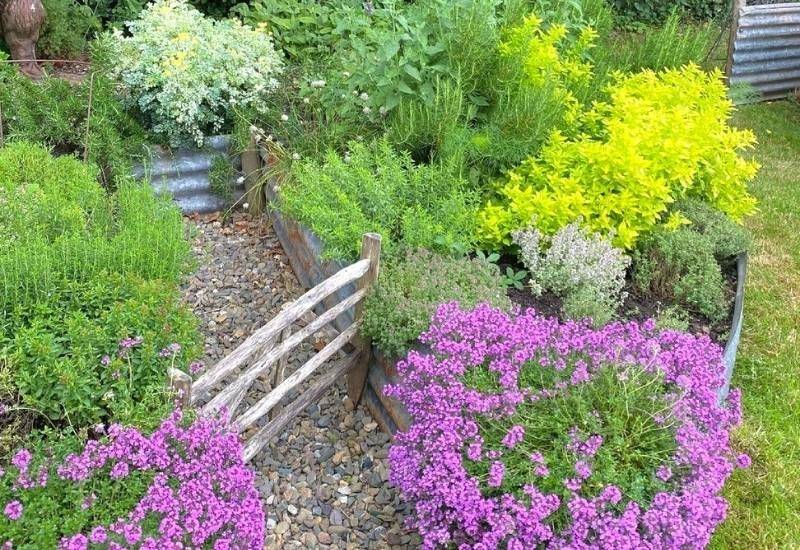
Deer are a serious problem for gardens, because these uninvited four legged guests eat away at flowers, leaves and young branches of vegetables, decorative plants and even herbs sometimes.
But when it comes to herbs, they are not our cervine visitors, and there are quite a few that stags, does and fawns will not stomach.
Many deer-repelling herbs like, lavender, rosemary and thyme, have far too strong a smell for deer to eat; these roaming herbivores are put off by strong aromas. Some even have a texture that deer detest, like sage. Thus, you can even use them to deter deer from your garden. On occasion though, they may have a bite at a few herbs.
Let’s see the deer resistant herbs that deter the hungry herds from your garden, and we can also learn a few practical tricks to make the best use of them to keep out those pesky deer from feasting on flowers and vegetables as well.
These are some of the most popular and loved herbs in the world in fact, by Humans, but why not by deer? All up next!
Why Deer Don’t Like Some Plants like Herbs
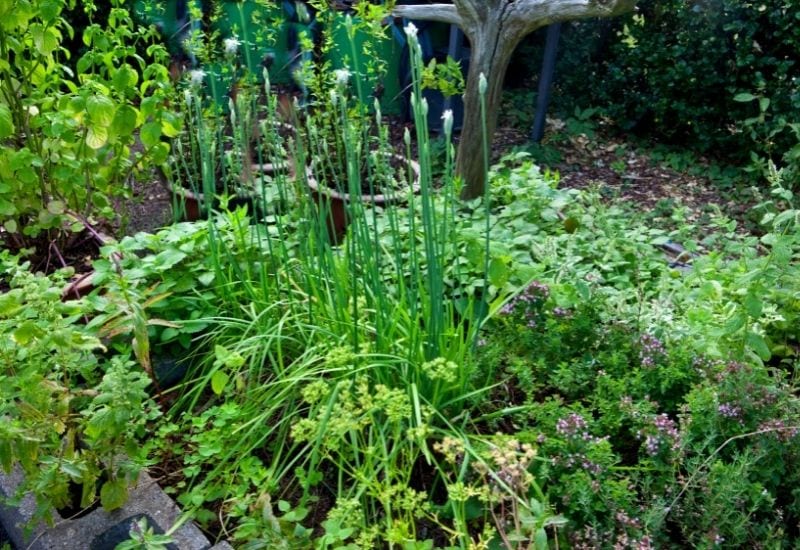
Deer eat a lot of leafy plants, and they are very adaptable. But they also have quote refined taste and they are picky. If you give a deer the choice between a head of lettuce and mint leaves, it will certainly go for the first.
The reason is that mint has a very strong smell. They actually have more olfactory receptors than dogs! Our herbivores beat them 297 million to 220 million. We only have 5 million, to give you an idea…
For this reason, herbs like catnip or even basil smell pleasant to us, but they are overwhelming for our horned friends!
Are All Herbs Repulsive to Deer?
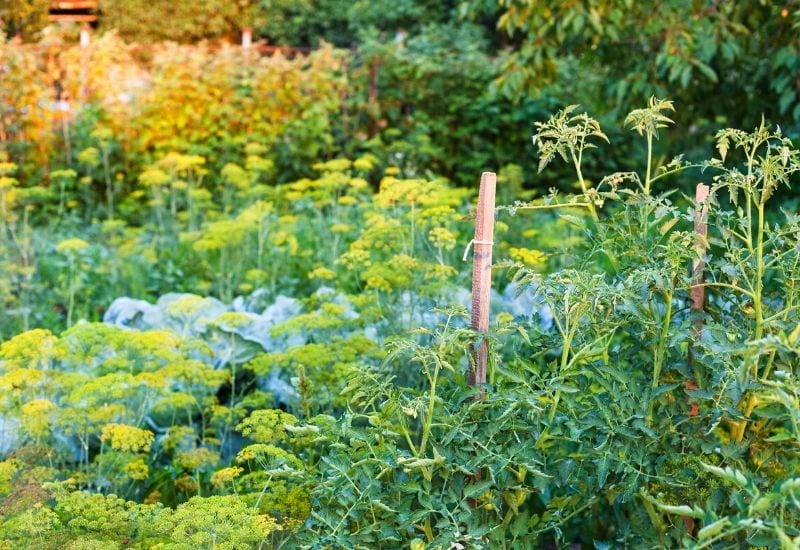
Some herbs are more off putting to deer than others. There are so many herbs if fact that it’s even hard to say where “herb” stops and “vegetable” starts.
Fennel is a great example… Some like lavender will guarantee that a visiting stag, doe or fawn will keep away from it. It is intoxicating for us, imagine smelling it 50 times stronger!
Others like parsley may not be your average deer’s favorite meal, but on occasion, it will do quite nocely as an accompaniment to other leaves…
Will Deer Ever Eat Herbs?
Sometimes deer will even munch on some strong smelling herbs. However this will happen only if deer have no better alternative. If they have plenty of green leaves of other, more appetizing types at their disposal, they will not even get near your thyme and basil.
But if there is a bad year for better plants for them, or if there us a general scarcity, they will even try out your herbs.
This is a major source of confusion with deer and deer resistant plants. Gardeners and readers of specialized magazines like ours often find that in their case, deer even eat plants that are classed as “deer resistant”. This is mainly due to the environment. Out of necessity, deer are flexible.
But it is also true that herds don’t always act in the same way. Some may be more “adventurous” with their eating habits than others, and the exact species may even change things slightly.
But on the whole, strong smelling herbs are reasonably safe with deer and even repellent.
And it’s not just the smell…
What Else Puts a Deer off in a Plant?
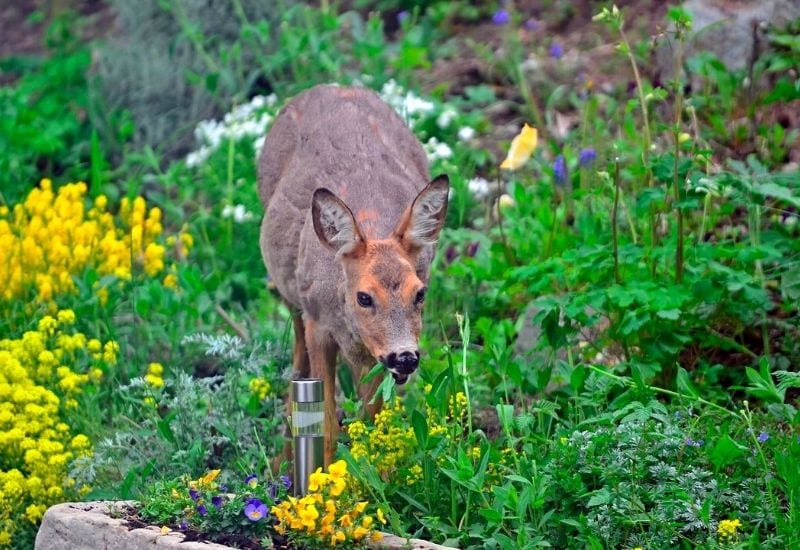
There are other things that can tell a deer that the plant is not good (or great to it) apart from the aroma. Some plants are poisonous to them, and these will never become food for them.
But there is another thing that these leaf eating animals don’t like: fuzzy leaves are annoying to their tongue and palate.
We think that animals are simple, but this shows that they don’t just go for the taste of fold, but the smell and even the texture, like we do, or even more! This is one of the reasons why sage and borage are really loathsome to deer!
So, this is all about what they like and what they don’t… But how about using herbs as deer repellents?
Why Strong Smelling Herbs Work as Deer Repellents?
Deer use their sense of smell to find food. Like dogs and wolves, only they are looking for leaves and buds. Sometimes, herbs have such strong fragrance that it covers other plants.
Not completely to a fine nosed animal like our four legged friends, but it can be enough to steer them in another direction.
For this reason, you can use strong smelling herbs like rosemary and lavender to tell your hungry visitors, “This is not the dining room!” They will sense the fresh aroma of young and sweet leaves coming from other directions and turn that way…
It’s like tricking them into thinking that your spinach and carrots are actually few it will be fussy for them to get them…
Using Strong Smelling Herbs For Protecting Your Garden Against Deer Damage
This is the principle, but how can you actually achieve this?
Mixing Them in
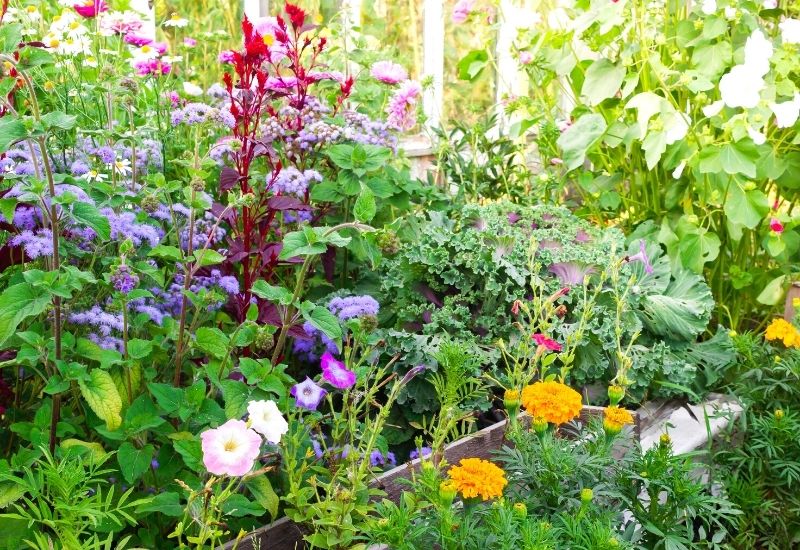
A very good way of keeping deer away from your flowers and vegetables is to intersperse your beds and borders with strong smelling herbs. Growing lavender or rosemary in both produce beds and decorative ones is easy and it also adds to them.
As longs as you have them along the whole bed or border, at roughly regular intervals, they will cover it with their aroma and “hide” soft and sweet tasting veggies or flowers from hungry horned quadrupeds.
If you are still using a monoculture system in your vegetable garden, this may well be your chance to start moving away from this old, inefficient and also unnatural method.
Surround Your Veggies and Flowers
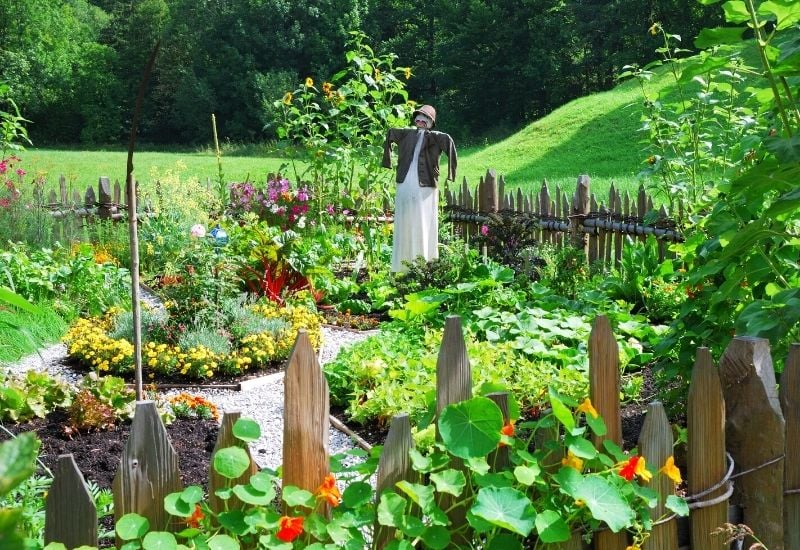
Yet another system you could use is to grow very aromatic herbs around your vegetable garden, or around your flower beds and borders. This has similar effects to mixing them in but…
It has a major advantage:
But it does also have some disadvantages:
Top 10 Herbs That Keep Deer Away from Your Garden
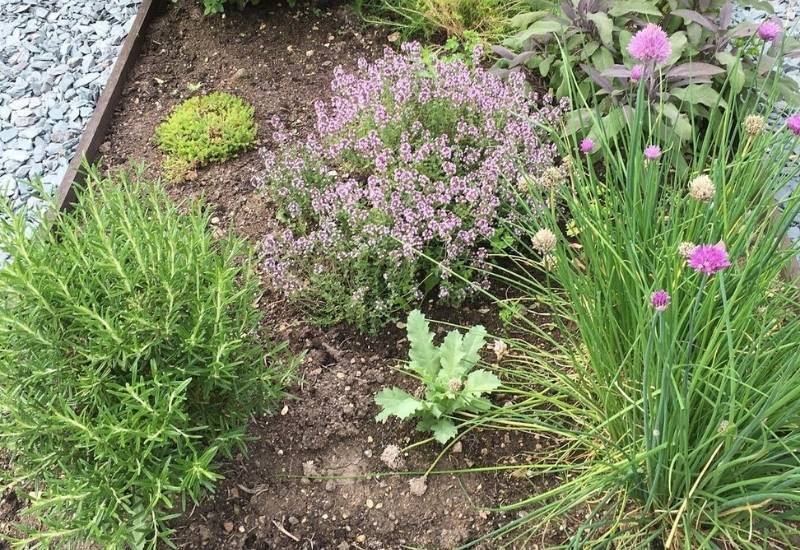
If you want to go safe and plant the very best herbs to keep deer away, here they are for you!
So, choose the method that’s best for you, and even a match of both systems can work really well. But which are the best herbs to use against hungry deer?
Here are top 10 highly aromatic herbs that are generally deer resistant:
1: Lavender (Lavandula spp.)
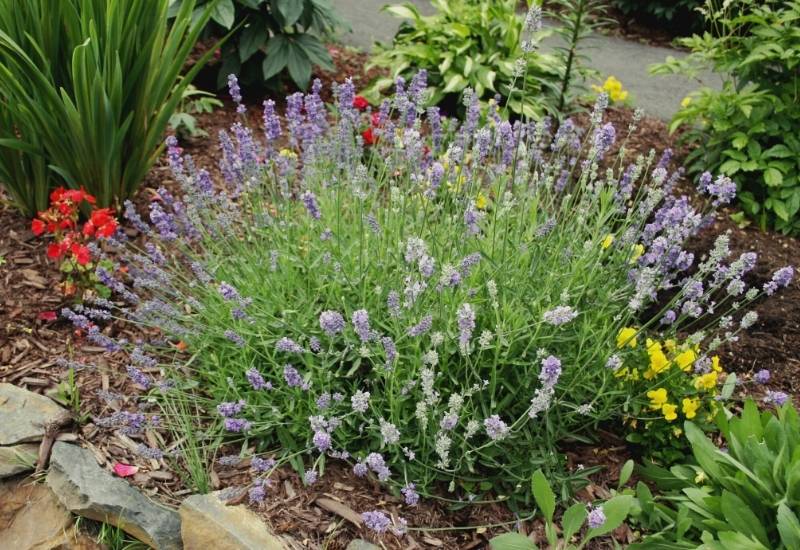
When it comes to aromatic herbs, lavender is by far the last one a deer would munch on! Lavender has one of the strongest aromas in the whole world, and it also has the advantage of being perfumed all year round.
Of course lavender also has other uses; it has beautiful blooms; you can use it to make soap and perfumes; it is used to make clothes smell nice…
Did I say that it is by fat the world’s favorite plant to pollinators? This means that lavender also improves your garden’s fertility and health! And all this while keeping any ill intentioned doe, stag pr fawn at safe distance!
2: Rosemary (Rosmarinus officinalis)
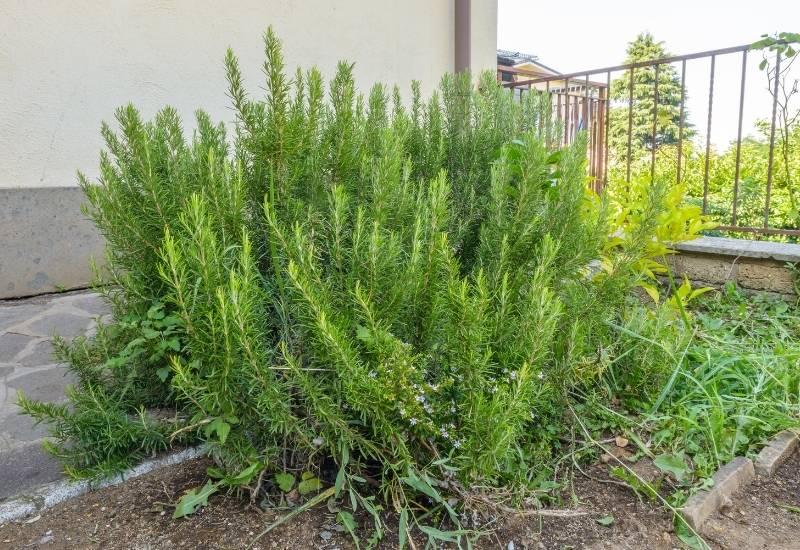
Rosemary is one of the world’s most popular herbs in cooking but deer find it repulsive. It is a very strong and undemanding plant with “Mediterranean” written on it.
Deer are much more at ease on high pastures. Rosemary grows fast and strong and it soon forms fairly large shrubs that you can use as deer barriers.
With lavender it makes an ideal “aromatic wall” against undesired dinner guests; they are thick and spread fast. Stem cuttings work perfectly well and I would really suggest using them for large areas, like big vegetable gardens, for example.
Ah, and while rosemary is famous for the aroma and flavor of its needle like leaves, the blooms are fantastic too, and they start in winter, when most gardens need a bit of extra color!
3: Thyme (Thymus vulgaris)
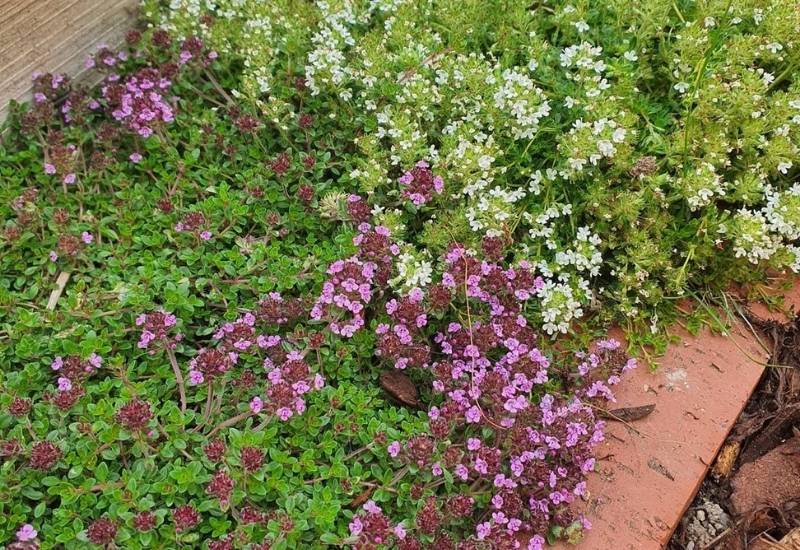
Thyme is a small Mediterranean herb that deer don’t eat. It has a very strong aroma, and it also has amazing medicinal properties; in fact, thyme essential oil is actually far stronger than the popular tea tree oil. And our beautiful but hungry herbivores don’t like many medicinal herbs.
Thyme is an excellent herb and given its small size, it is easy to grow it between vegetables, shrubs or flowers. It is also very undemanding and it is ideal for rock gardens.
In fact it actually likes poor conditions, and if you visit its natural environment, you will see it cropping up among stones on the sides of roads. You guessed it; deer don’t feel at ease on the coasts of Spain, Italy or Greece!
There are many varieties of thyme, including decorative ones; in fact. The little lavender to white flowers are very attractive.
4: Mint (Mentha spp.)
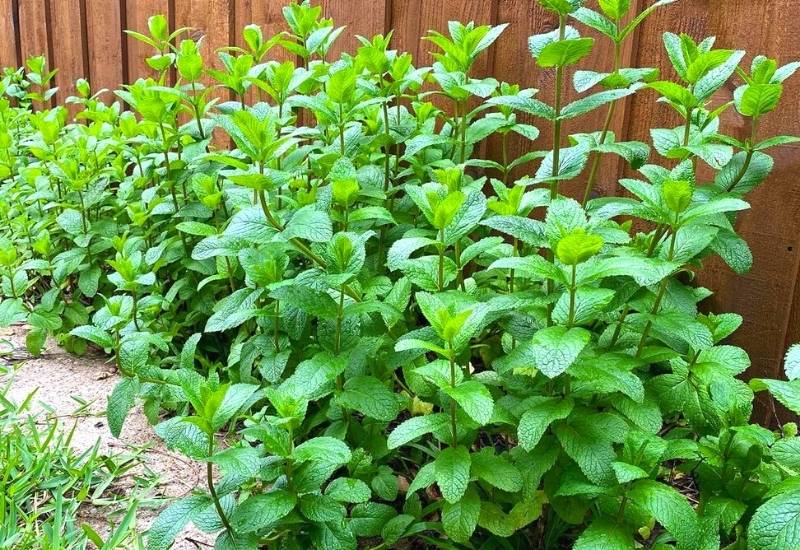
Fresh mint is lovely in summer, and you can enjoy it without deer spoiling your pleasure! Even this most fresh of herbs is repulsive to our friends!
Once more, it’s a simple matter of fragrance. The very hungry animal may, just may, have a bite, but this green leafy plant will deter them on most occasions.
Mint is also one of the herbs you can grow in most climates, including in temperate and fairly cold ones. It naturalizes very fast even in partial shade, so you can really use it in wild areas to grow a “deer unfriendly” carpet.
There are many varieties of mint, like peppermint (Mentha piperita), spearmint (Mintha spicata) chocolate mint (Mintha piperita f. citrata ‘Chocolate’) and even apple mint (Mintha suaveolens). The choice for both flavor and appearance is quite wide!
5: Sage (Salvia officinalis)
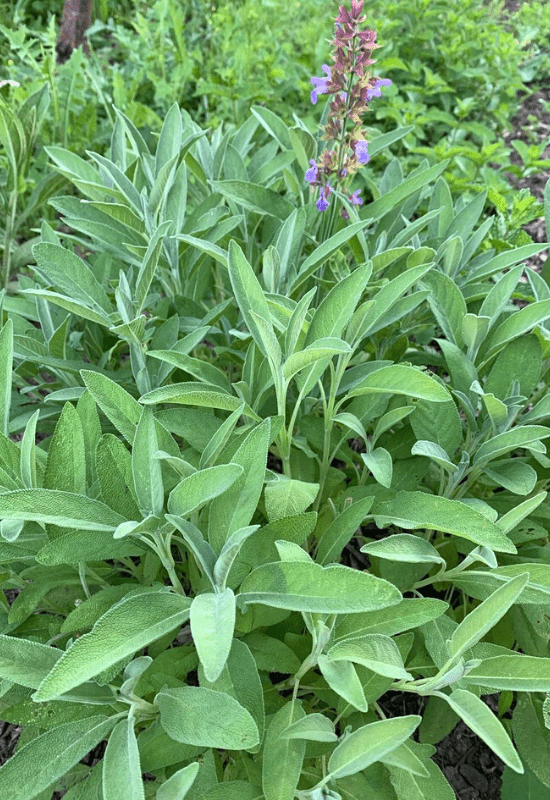
Sage puts off deer for two reasons. One is that it has a very strong fragrance all year round; the second is that its leaves are very fuzzy.
Combine these two qualities and you can be sure that a passing doe, stag or fawn will certainly give it a miss. And the smell can be a deterrent too.
Sage can grow into large and low shrubs in the right conditions; for this reason, if you have a large space and you want to keep dinner guests with horns at a distance, a few large clumps can work well.
It is also an evergreen plant, which will keep its beautiful foliage on in winter too. What is more, it is very productive and vigorous, so, excellent if you want to have a little side line to your business.
Finally, there are also interesting decorative cultivars, like the award winning ‘Purpurescens’ which has silver blue leaves, like other varieties, but at the tope these turn purple violet!
6: Chives (Allium schoenoprasum)
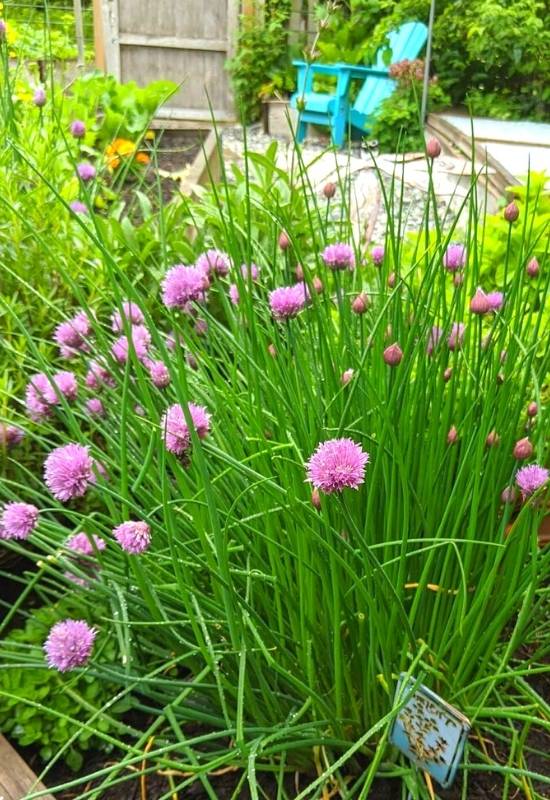
Little chives add that extra light onion flavor to soups and salads, but deer just prefer their meals plain… No, they don’t like chives (nor garlic, in fact). Chives are also a fast crop, and because the plant is small, it is ideal to mix in with other crops.
It’s a fresh loving plant too, and we have seen that many deer resistant species are Sun and heat loving herbs.
For this reason, chives may be a good solution for a small vegetable garden in a temperate region, and you get an extra crop too.
Did you know that chives aloo bloom with pompon like inflorescences so they can work well in low flower beds as well?
This will happen in late spring or early summer with pale lavender pink flowers! And if you want to move your chives around, they are also perfect for small portable containers!
7: Borage (Borago officinalis)
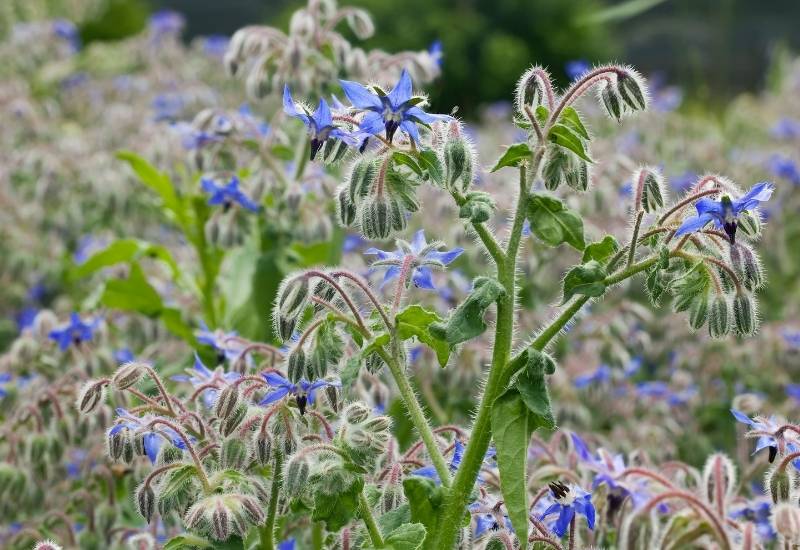
Borage is not very common as a herb, but it is easy to grow and very decorative, and its fuzzy leaves will put off any ill intentioned deer! In fact the “hair” is so hard that it can even sting you slightly on old leaves.
And maybe this is one of the reasons why it’s not very popular with Humans either, despite its impressive nutritional and healing qualities.
Then again, borage is really great as a decorative plant. It has an elegant herbaceous look with broad light green to silver blue leaves;
these form large clumps that look great in natural looking borders and flower beds. And then you get long stems with nodding star shaped flowers of the most light blue color!
8: Bee Balm (Monarda spp.)
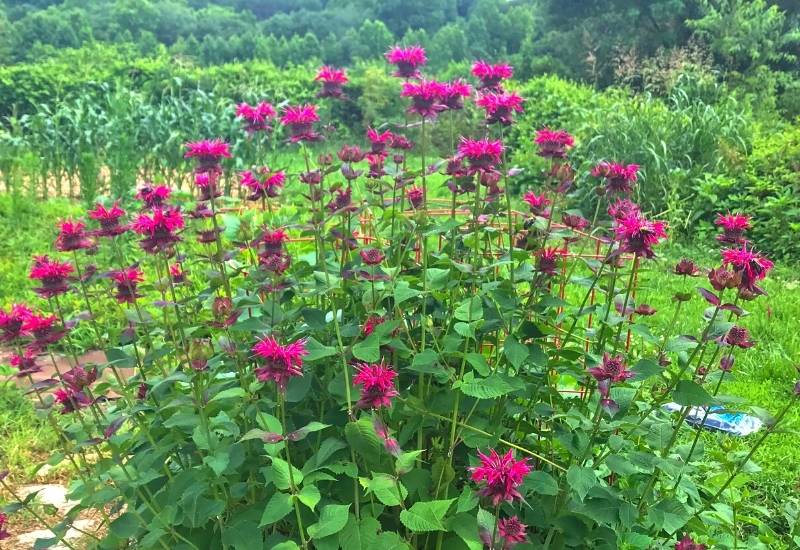
Bee balm is excellent as a refreshing herb but also as a decorative herbaceous flowering plant and deer will not bother with it. It is mainly more famous as a flowering beauty for borders, beds and cottage gardens.
In fact there are many cultivars with flowers of different colors, along all the pink purple to violet range, with some striking red varieties too.
But the leaves of this fragrant plant are also very common for teas, which are antimicrobial and soothing. In fact it’s excellent even against indigestion and nausea. Pity our leaf eating friends don’t like it!
Bee balm will keep some animals away, like all the stags, does and fawns that live near you, but they will attract others… Don’t worry though, these are pollinators like bees and butterflies and in fact the name is not random.
9: Yarrow (Achillea millefolium)
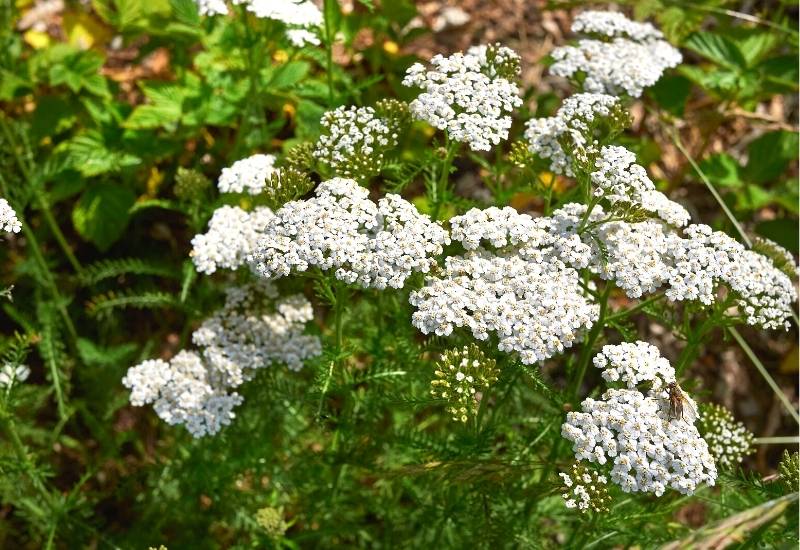
Yarrow too is loathsome to deer, and it too is both a herb and a garden plant. The reason why our animal friends don’t like yarrow is actually unusual.
It does not have a strong scent and it does not have fuzzy leaves. But its foliage looks like fern fronds, and oddly enough our fussy eaters don’t like them at all.
Yarrow is a wild looking herbaceous plant with massive blooms and and medicinal properties. While you can use it for a wide range of ailments, from fever to diarrhea and toothache, there are also many showy cultivars for beds and borders.
They come in a range of warm colors from pure yellow to dark red, and they really look great in natural designs.
10: Catnip (Nepenta cataria)
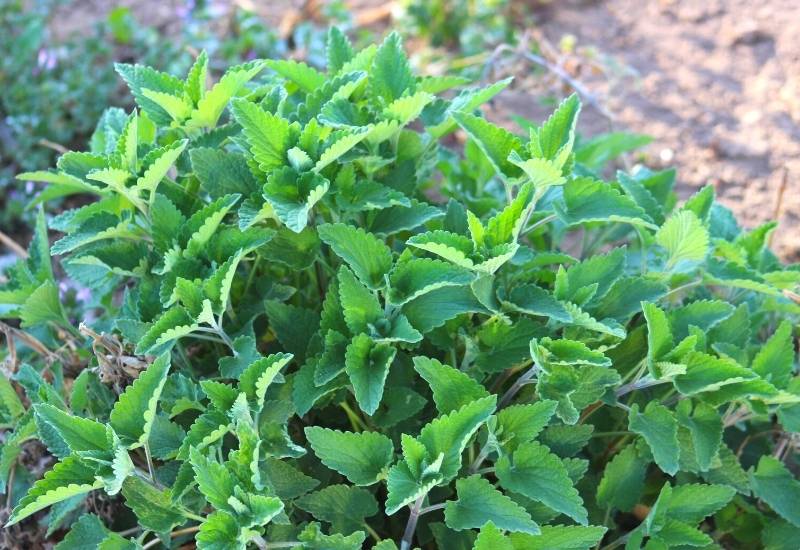
Guess what, cats love catnip but deer hate it! This vigorous perennial with a very distinctive aroma and flavor forms large clumps of beautiful green foliage too, which blossoms tiny but beautiful white flowers with a purple dot in the center. Its aroma is reminiscent of mint.
As a herb, it can add an original note to your dishes, but you can also use it for teas. As a decorative plant, it is very gold as ground cover or to fill in borders and beds with its light green, triangular and thick foliage. In fact, it grows very fast too.
Catnip has a strange relationship with animals. We said that cats go mad for it and deer turn up their noses at it. But it will also keep other little creatures away from your garden like mosquitoes and cockroaches!
Herbs That Deer Don’t Like – But You Will!
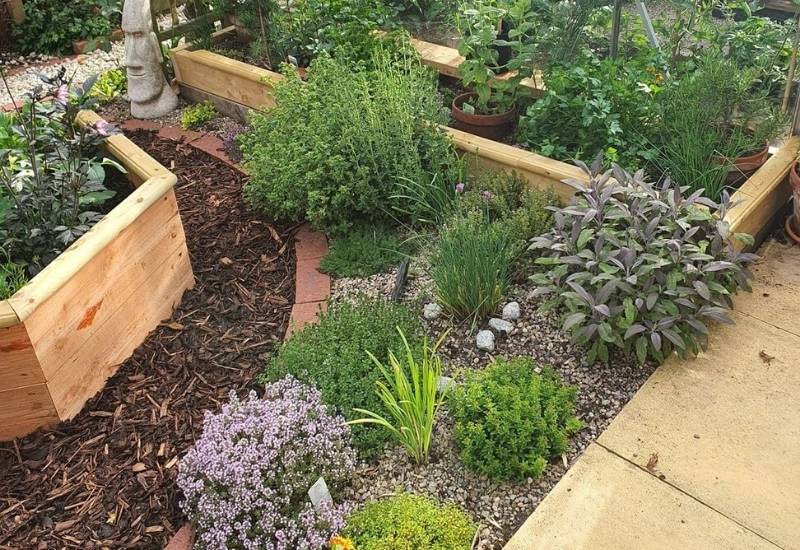
These herbs, from mint to chives, from lavender to rosemary are all disgusting to deer. If you do have a problem with these animals, you may want to start planting them soon. The more you grow them, the more you will deter unwanted horned dinner guests.
You can be generous with these plants; grow them abundantly and in case cut them back if they outgrow the space you have given them.
They are all very strong and vigorous. Some are better for sunny hot places, but some are good for fresh spots. And as you can see, quote a few are excellent in decorative but deer free gardens too!

Written By
Adriano Bulla
After many years as an academic in London, Adriano Bulla became a writer, publishing books like A History of Gardening, Organic Gardening and Elements of Garden Design; he then decided to become a gardener, following his childhood dream, and has been following his dream writing and gardening professionally in Southern Europe, where he has specialized in new and innovative organic gardening fields and techniques, like permaculture, regenerative agriculture, food forests and hydroponics.

Thank you! That was very inciteful. I planted a box of wildflowers around a tree last year, without thinking of my critter friends who would love to eat them, and then they ate them…lol. I was so mad. So, this year I thought if I planted “stinky” herbs in and around the flowers that would keep them away. Thanks for the info.
You’re welcome! I’m glad you found the information insightful.